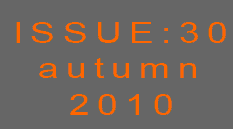
Research reactor operators want Europe to maintain its global lead
On 20 September, two ENS corporate members, SCK-CEN (the Belgian Nuclear Research Centre, in Mol) and NRG (the Nuclear Research and consultancy Group, in Petten, Netherlands), joined forces with the CEA (the Commissariat à l’Energie Atomique et aux Energies Alternatives, in France) to sign a position paper setting out the establishment of the European Research Area of Experimental Reactors (ERAER). This ground-breaking document is a statement of collective intent and a detailed road map determining the way forward for Europe’s nuclear research reactors.
The position paper, which was signed during the General Assembly of the Sustainable Nuclear Energy Technology Platform (SNETP), is based upon current infrastructures and projected needs, as identified by the signatories. It proposes a consistent policy for the operation of Europe’s experimental nuclear reactors that takes account of the very latest technology and is in keeping with the Strategic Research Agenda (SRA) of the SNETP. As the SRA clearly states, Europe will only be able to hold on to its position of worldwide leadership in research reactor technology if it establishes a research area specific to research reactor technology - the ERAER. The ERAER is based upon the operation of three main research reactors:
-
the Jules Horowitz Reactor (JHR) at the CEA’s facilities in Cadarache, France: the JHR addresses industry’s requirements in the field of materials testing and fuel performance analysis for Generation II and III reactors, as well as generic research for Generation IV reactors.
-
the MYRRHA reactor, at SCK-CEN in Mol, Belgium: this is a flexible fast irradiation facility that operates as a sub-critical system and a critical reactor for material and fuel testing for Generation IV and fusion reactors. It is also used as a back-up reactor for medical radioisotope production.
-
the PALLAS reactor at Petten, in the Netherlands: when built (it is currently being designed) the Pallas thermal spectrum reactor will replace NRG’s High Flux Reactor (HFR). It will ensure continuity for the vital production of medical radioisotopes for Europe, thereby supporting industrial applications.
The signing of this ERAER position paper is highly significant because it should provide for optimal exploitation of Europe’s existing material and fuel testing capability. This will, in turn, support reactor safety, optimised plant lifetime management and future reactor design and innovations. The development of a fast spectrum irradiation facility (PALLAS) will further enable Europe to stay one step ahead of the rest of the world when it comes to nuclear research reactor technology. At the same time, by supporting the production of the medical radioisotopes that Europe’s hospitals so badly need the new road map will help provide an essential public health service for European citizens.
The three signatories of the ERAER position paper were clear in their support for and promotion of this joint initiative:
Rob Stol, Managing Director of NRG, in Petten, emphasised that: “The position paper is of great importance for the future of the application of nuclear technology in both power generation and nuclear medicine. The three research reactors will play a crucial role in the qualification and testing of fuel and construction materials for existing and future reactors. Security of supply of radio isotopes for nuclear medicine is also a challenge since the old research reactors that produce these materials have to be replaced in this decade. The position paper expresses the common will to cooperate in these areas.”
Christophe Béhar, Director of Nuclear Energy at the CEA added that: “The nuclear revival has led to a new source of dynamic competition in this field. The setting up of a European research area for research reactors is undoubtedly of capital importance if Europe wants to remain a world leader in this domain.”
Eric Van Walle, Managing Director of SCK-CEN added: “This agreement is the fruit of a common commitment to maintain at the very highest level all acquired knowledge with regards to nuclear research in Europe. Going beyond national boundaries and taking into account the important context of sustainable development, the three partners have put at society’s disposal research tools.”
To have a detailed look at the ERAER position paper and the joint press release, click on the following links:
You can also find more information from the web sites of the three signatories: www.cea.fr ; www.sckcen.be and www.nrg.eu
|

